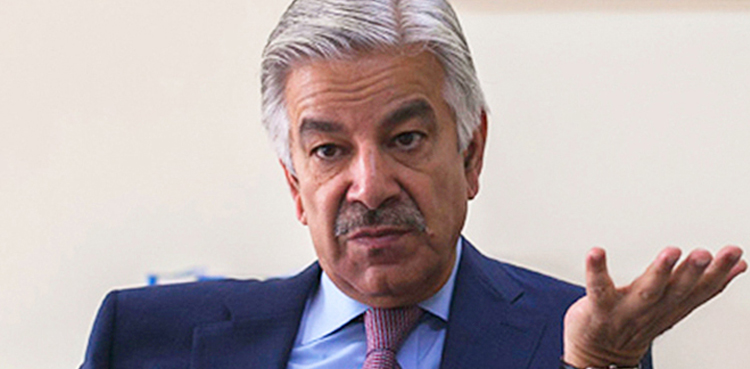As an Aga Khan University Institute of Educational Development (AKU-IED) Master of Education (M.Ed.) course participant, it was an illuminating experience to participate in the ‘Effective Management Practices’ (EMP) course, which was undoubtedly a journey of transformational learning and deep insights. This course allowed me to reflect on my previous practices as a head teacher, enabled me to question and unlearn the different key aspects of my traditional practices and motivated me to learn new and innovative practices in the field of educational leadership and management. The following text portrays my understanding gained from the EMP course on Teacher Professional Development, which is just one key and insightful aspect of the EMP course offerings; and pray that these ideas enlighten heads, teachers and education providing systems on the need, significance and ways of initiating PD in schools. Professional development of staff broadly refers to providing enabling conditions to staff to enhance their productivity in the various dimensions of their day-to-day responsibilities including those related to their technical and personal spheres of profession. The professional development of teachers could be defined as teachers’ learning: i.e., how they learn to learn, how they reflect on and make meaning from their learning, and how they apply their knowledge to support pupils’ learning (Postholm, 2012). Hence, teacher’s professional development has deep roots in and integrally linked with students’ learning outcomes and their overall achievements and wellbeing. In educational settings teachers play an important role in achieving the goals of teaching and learning processes. However, it is due largely to knowledge growth at an unprecedented speed in the contemporary world that it becomes increasingly difficult for teachers to keep themselves updated on the evolving and rapidly growing knowledge in education. Needless to say, that in their profession teachers have to continuously aspire to grow on an ongoing basis, otherwise, they run the risk of redundancy and decline in their professionalism. Hence, the need for them to grow professionally which could be through engaging in the reflective practices, through self-directed learning, especially increasing their theoretical understanding of the day-to-day issues and trying to put their theories into practice, and/or through availing from time-to-time the formal (i.e. tailor-made) professional development opportunities to ensure their continuous growth and renewal. It is important to bear in mind that teacher professional development is not an event, it is, instead, an ongoing process that needs quality time, conducive environment, necessary resources, ongoing efforts, and critical reflection to gain pedagogical content knowledge (PCK) needed to improve student learning outcomes. Professional development in the school context Learning is an enigmatic process; therefore, it is important to consider how people learn and how the school-based as well as the external conditions shape, influence and determine their learning (Belanger, 2011). What we clearly know today is that learning is guided by our own philosophies of learning such as behaviorism, cognitivism, constructivism, and social constructivism. These theories/philosophies elaborate how knowledge is perceived, constructed and approached. Teacher professional development primarily involves the task of enabling teachers to challenge their existing beliefs and approaches about the ‘what,’ ‘how,’ ‘why,’ and ‘when’ aspects of their learning processes. What we also know from our experiences of work in AKESP, a prestigious education providing institution of AKDN, is that schools define and deliver professional development based on the analysis of their current needs. So, the needs analysis becomes the first step in determining the goals of teacher professional development. In fact, the Annual School Improvement Plan (ASIP) is used as a tool to identify and define the needs. Generally, the outcomes of the Training Need Analysis (TNA) relate to enhancing teachers content knowledge, upgrading teachers’ pedagogical skills, improving their problem-solving techniques, managing conflicts, engaging teachers in reflective practice, relating student home tasks with their conceptual learning, strengthening teachers’ assessment techniques, helping teachers understand the twenty-first century leaning skills, and augmenting their leadership skills. Role of the Head Teacher in managing staff professional development School leadership has the pivotal role, of course, after classroom teaching, in influencing and shaping student learning. In fact, it helps improve teaching and learning processes indirectly and through their influence on staff motivation, commitment and working conditions (Leithwood, Harris, & Hopkins, 2008). Therefore, the school leadership role becomes more significant in professional development of staff. Literature identifies four areas where head teachers have substantial impact on teachers learning, these include: head teacher as instructional leader and learner; the creation of learning environment; direct involvement in design, delivery, and content of professional development; and the assessment of professional development outcomes (Bredeson, 2000). Other forms of professional development include motivation from head teacher to improve teachers academic and professional qualifications through distant learning degree programs. This will result in new learnings for staff and help create knowledge societies within the school through sharing of knowledge with colleagues. Also, head teacher could play her/his role in encouraging teachers to develop reading habits and share their knowledge from the literature with colleagues and students. In addition, opportunities for discussions and reflecting on classroom practices in informal sessions also leads to professional development and knowledge creation. Also, in institutions like AKESP head teachers and teachers are also encouraged to design and implement action research projects to improve small yet important learning aspects related to students. Such innovations from head teachers always benefit the teachers, which then helps the organisation to become a learning organisation. In-house professional development programme Head teachers are not indispensable agents and gatekeepers of teacher learning, but they as leaders and learners become role models, coaches, facilitators, and guides to move teachers towards greater and higher levels of independence and professional autonomy (Bredeson, 2000). The traditional, i.e., authoritarian, approach to school leadership style has numerous undesirable consequences including poor results, dwindling teacher motivation, misappropriation of financial resources and expanding the gulf between school and parents. Hence, the need for head teachers to become sources of inspiration and encouragement for their teachers, students and parents. When it comes to providing teachers in-house professional development opportunities, head teachers need to make the best use of pedagogical content knowledge expertise available in their schools to conduct in-house professional development sessions. This requires head teachers to identify the diverse talents their staff possess. In order to share a practical example from my own practices as a head teacher in an AKESP school, I identified that majority of my staff members were not good at using ‘prepositions’ and ‘adjectives’ while speaking and writing English. I discussed this matter with the language teacher at my school who was strong in his content knowledge. In close collaboration with this teacher we planned and conducted a professional development session for my schoolteachers. This sessionwas received very well and appreciated by teachers. Encouraged by this initiative, we did the same for improvement of math skills (i.e., average, percentage, and ratio) for all teachers, which was again a success. Followed by these professional development initiatives were other in-house sessions on computer literacy, communication skills, pedagogical skills, subject specific and assessment techniques. The topics of these sessions, in fact, were suggested by our teachers, which clearly showed their intrinsic motivation to attend these in-house professional development sessions. Therefore, it is important for head teachers to practice a leadership style that transforms the school into a community of learners. Being the most important person in the school, head teachers are required to earn respect of her/his staff (as well as from his school community) through humility, possessing strong mentoring skills and promoting leadership in all the staff members by delegating them different roles and responsibilities to play in the school improvement processes. Staff encouragement for self-driven PD activities Pedagogical leadership is a powerful approach and an effective alternative to improve schools as it invests in capacity building by developing students social and academic capital and strengthening teachers intellectual and professional capital (Sergiovanni, 1998). Here, the role of head teacher is to create an environment where teachers learn from each other by reflecting on each other’s practices. Along with creating a learning-conducive environment, staff also need encouragement for what they do. This brings motivation to teachers and has direct impact on teacher productivity. As our experience shows that some teachers are money-motivated while others find recognition, appreciation, and rewards as sources of motivation (Ganta, 2014). The encouragement factor helps teachers to be motivated intrinsically and this results in better performance and innovation in their work. There is consensus amongst the researchers today that use of incentives including ‘encouragement’ and ‘recognition’ work as engines driving teachers job satisfaction and motivation, which, in turn, prepare them to work in collaboration with their other peers and colleagues in and outside schools. The intrinsically motivated staff not only develop themselves professionally but also create an environment where they make academic alliances, discuss, and reflect on each other’s practices, go for team teaching, mentoring, and observe classrooms practices and provide feedbacks on each other’s work. Hence, they form a community of learners promoting their intellectual and professional capital, which meets a basic condition needed to create the knowledge society. An appeal to the Head Teachers and teachers on professional development In sum, contrary to the popular notion of always demanding for and relying on the financial resources to initiate professional development of staff in schools, it is primarily head teachers personal desire and commitment to make a difference in the lives of teachers, students and school community, and their vision and motivation to steer their schools to become the “schools-of-choice,” that makes all the difference in achieving the goal of staff professional development. This brief article concludes at offering the following menu of ideas which might help and guide head teachers in initiating and promoting the culture of professional development in schools: Since ‘reading’ is a miraculous process that facilitates and transforms our professional growth, it is important for heads and teachers to become role models for their students in ‘reading,’ and use their ‘example’ to inspire their students (and their parents) to become avid readers; Students of the twenty-first century are good at using technology and they enjoy learning if technology is incorporated in the lessons they are taught. Hence, there is a dire need to make teachers informed about technological advancements and encourage them to use technology and learning applications through teacher trainings, which should lead to improve students’ learning achievements. In order to develop the school-based professional development culture, head teachers must encourage senior teachers to mentor novice teachers to enhance their pedagogical skills. What is convincingly evident in schools is that the novice teachers are stronger in content knowledge but in most cases lack pedagogical skills. Reflection on actions is the key to learning, therefore, head teachers must make an endeavor to promote a culture of reflective practice in their schools by engaging teachers, students and staff to critically discuss and analyse factors facilitating and/or hindering school improvement processes. Creating leadership opportunities and assigning teachers (students and staff) leadership roles could bring more intrinsic motivation, sense of ownership and a deep sense of joy for being part of the school. Head teachers could form different school-based committees and delegate roles to teachers to perform in these committees. Our experiences have repeatedly shown that this initiative effectively leads to teacher leadership development in schools. Teaching is a dynamic profession, it needs heads and teachers to be proactive planners, strategic thinkers, and agile risk-takers. Head teachers must encourage teachers to bring innovation in their teaching strategies on an ongoing basis by introducing team-teaching, micro-teaching, and cooperative learning techniques. One of the hallmarks of the best performing schools is that they have a culture of compassion, care and growth for all school stakeholders. The head teachers will be required to review and assess the quality of their endeavors to promote such an environment in schools. It is always this culture where the notion of staff professional development blossoms and achieves its noble goals. It is also noteworthy that the culture of compassion cannot be promoted overnight, in fact, it takes constant effort and time to nurture and safeguard it from sliding back to the conventional school milieu. References Belanger, P. (2011). Theories in adult learning and education. Verlag Barbara Budrich. Bredeson, P. V. (2000). The school principal's role in teacher professional development. Journal of In-Service Education, 26(2), 385-401. doi:10.1080/13674580000200114 Ganta, V. C. (2014). Motivation in the work place to improve the employee performance. International Journal of Engineering Technology, Management and Applied Sciences, 2(6), 221-230. Leithwood, K., Harris, A., & Hopkins, D. (2008). Seven strong claims about successful school leadership. School Leadership and Management, 28(1), 27-42. doi:10.1080/13632430701800060 Postholm, M. B. (2012). Teachers' professional development: a theoratical review. Educational Research, 54(4), 405-429. doi:10.1080/00131881.2012.734725 Sergiovanni, T. J. (1998). Leadership as pedagogy, capital development and school effectiveness. International Journal of Leadership in Education, 1(1), 37-46. doi:10.1080/1360312980010104
from News Updates From Pakistan - Pakistani News - The Express Tribune https://ift.tt/3pvsr9d


